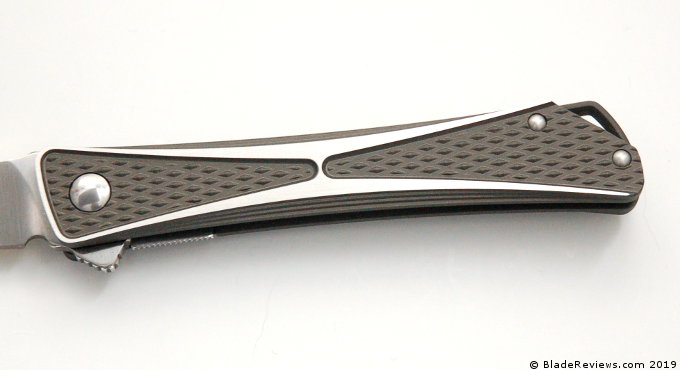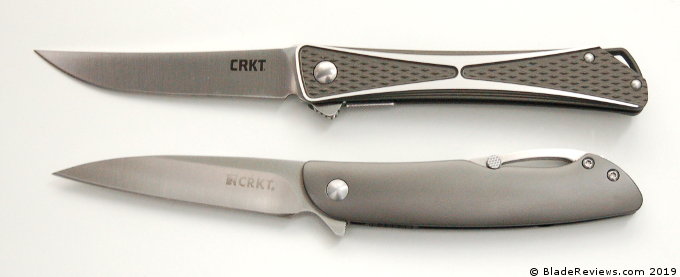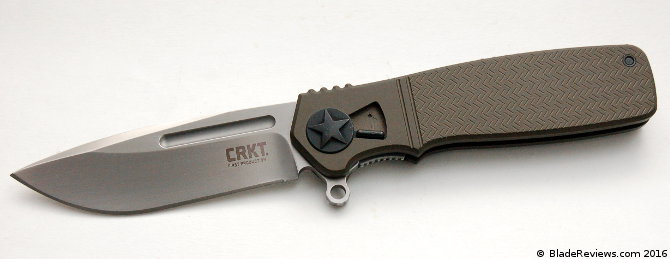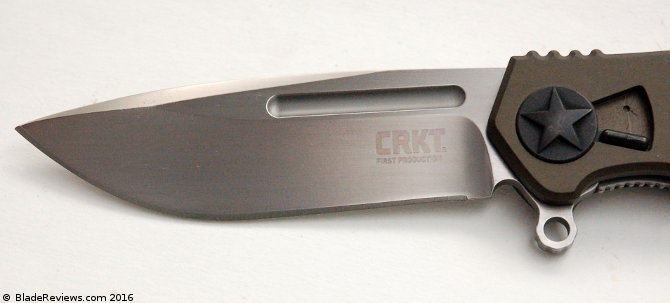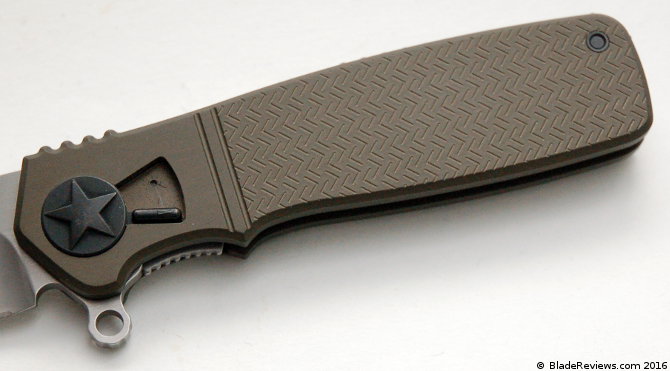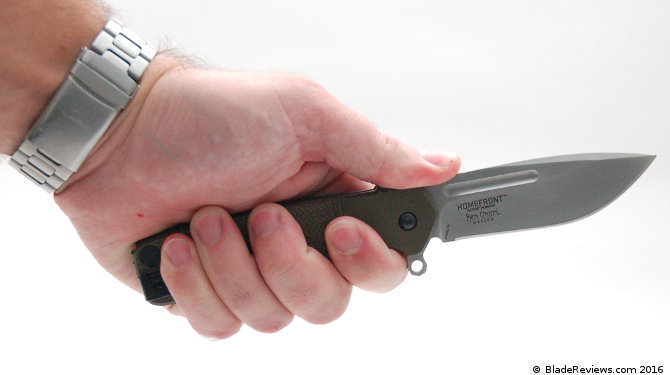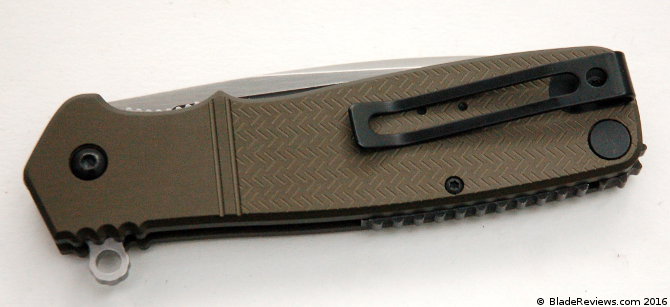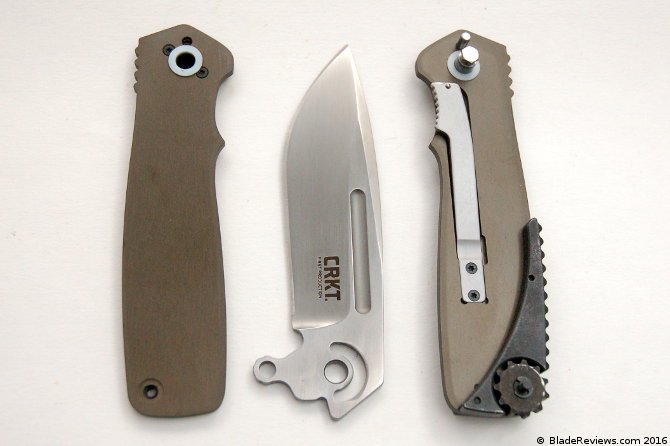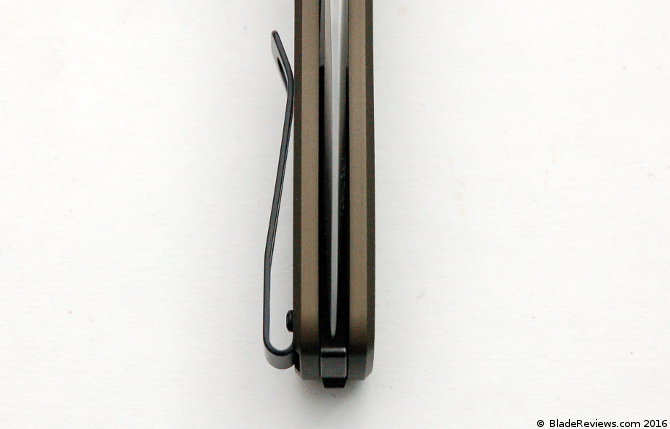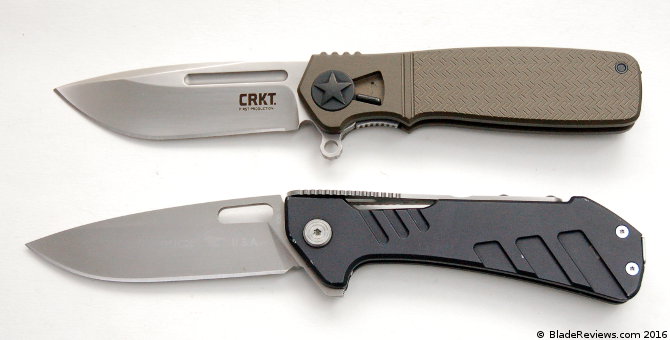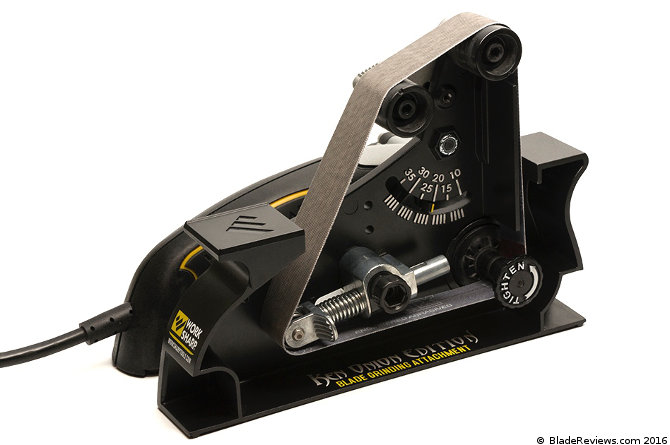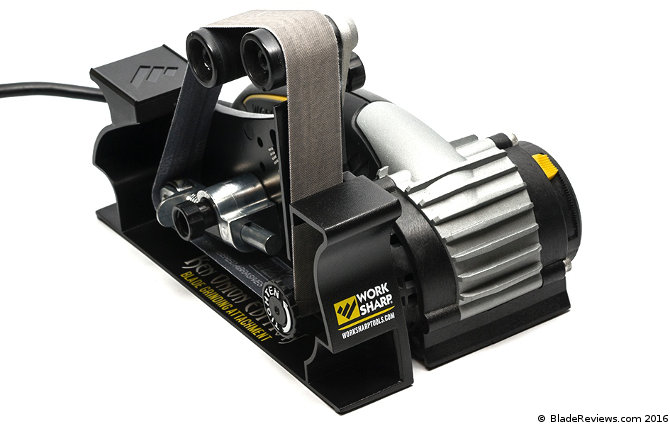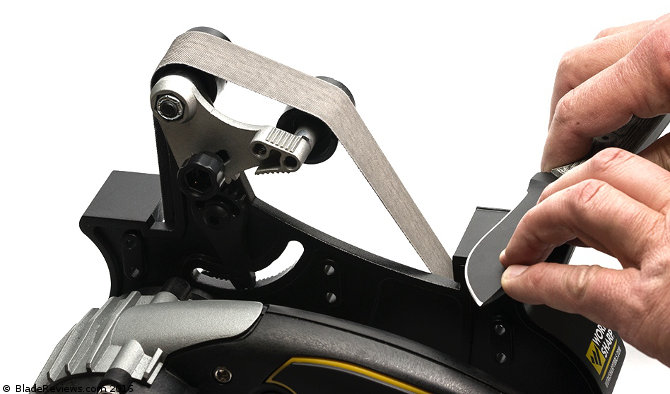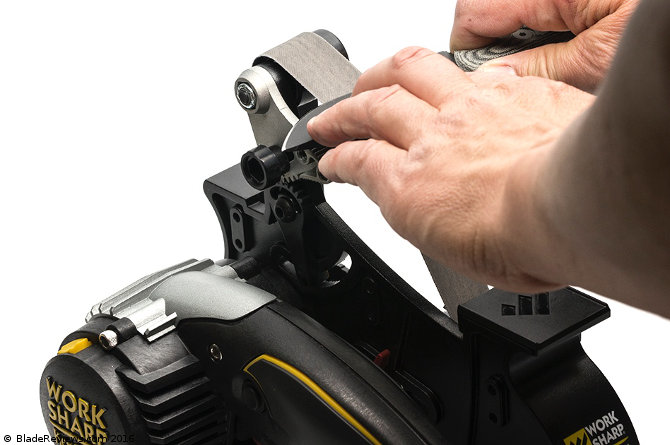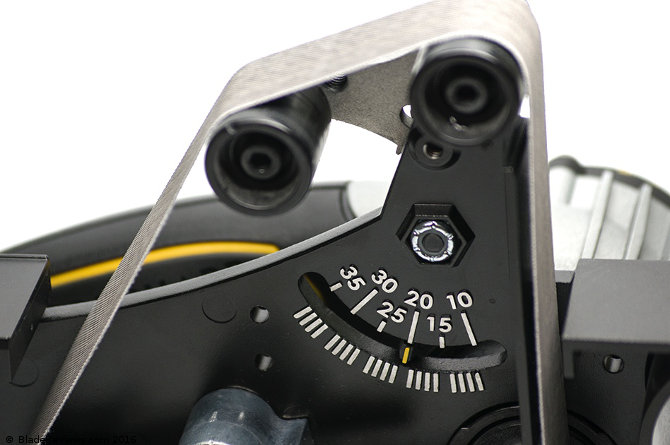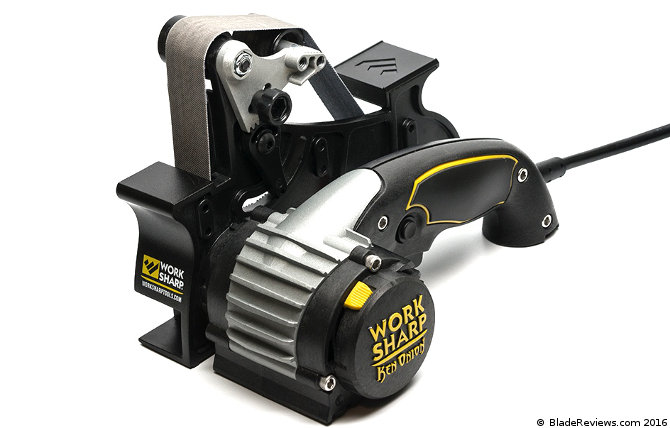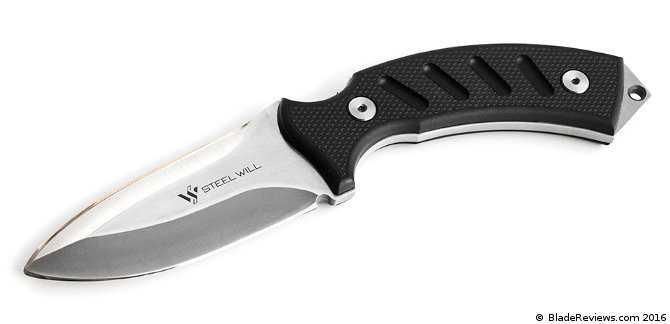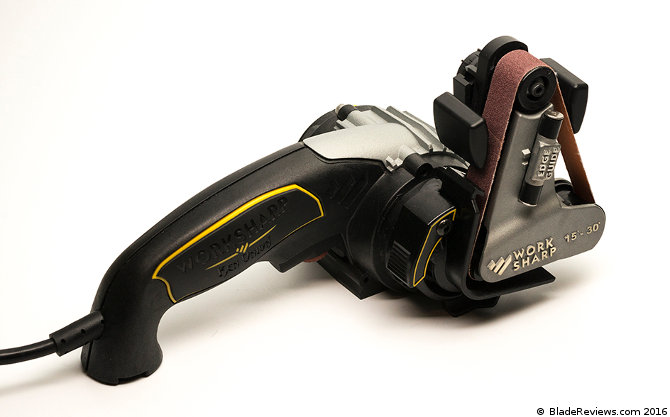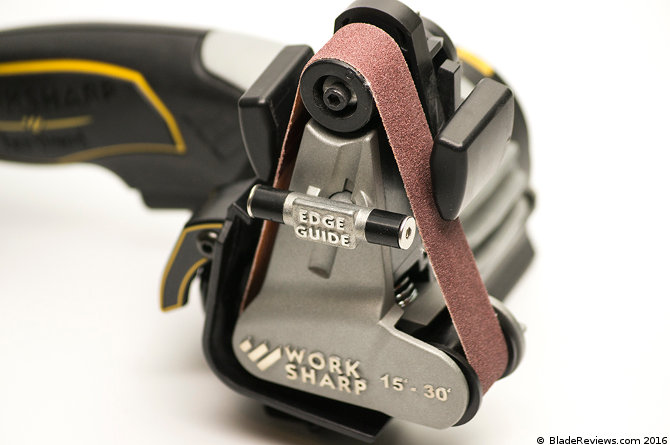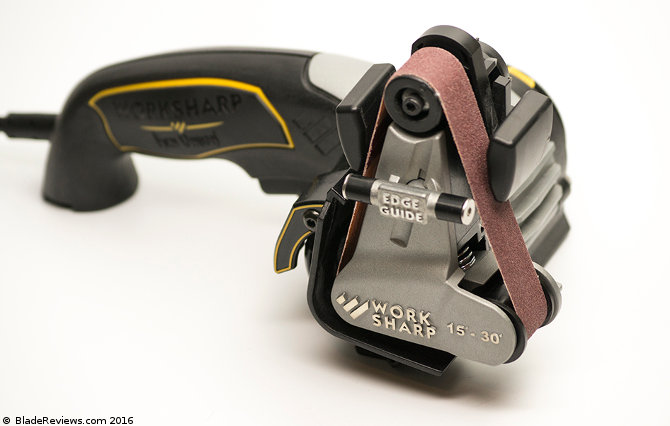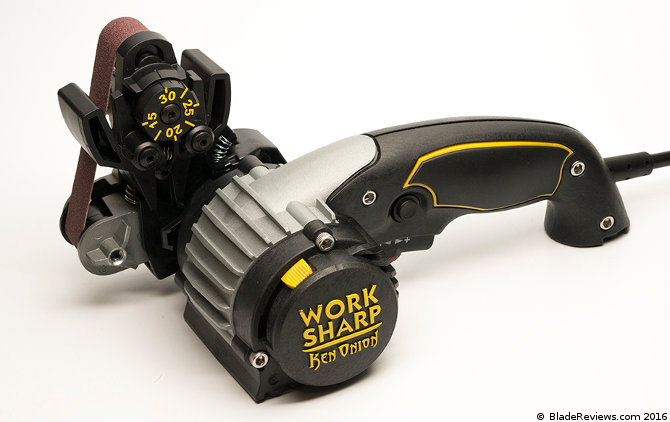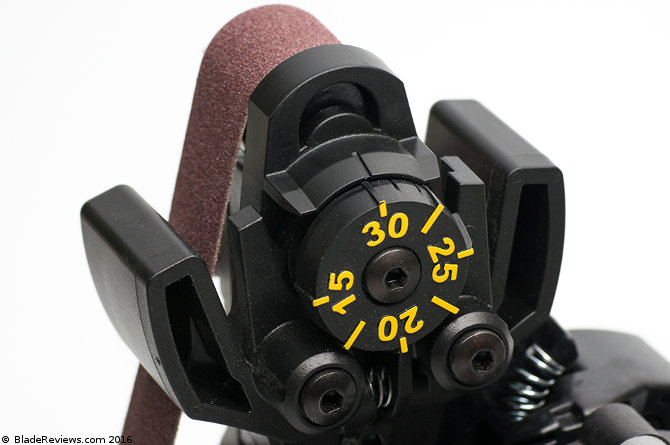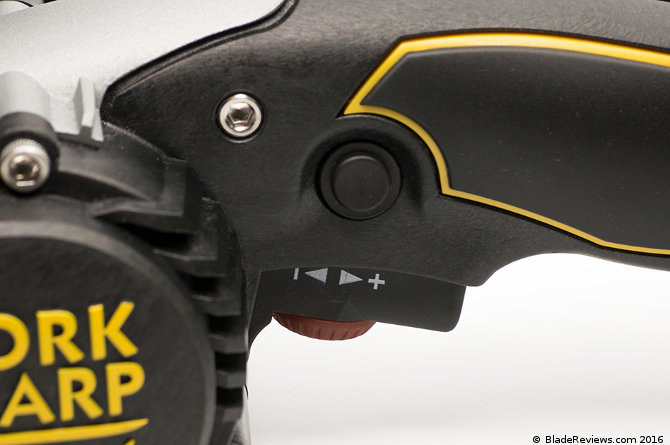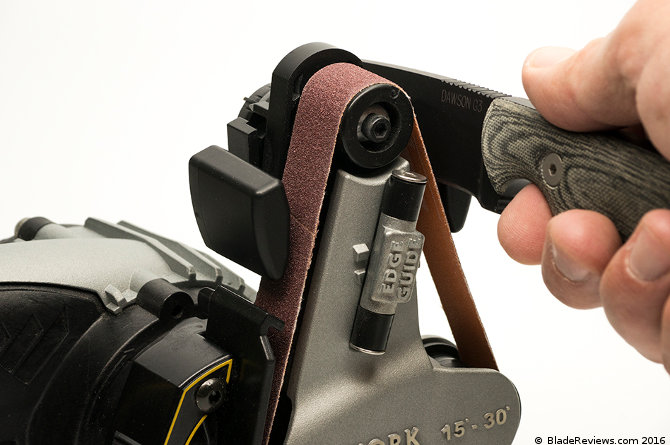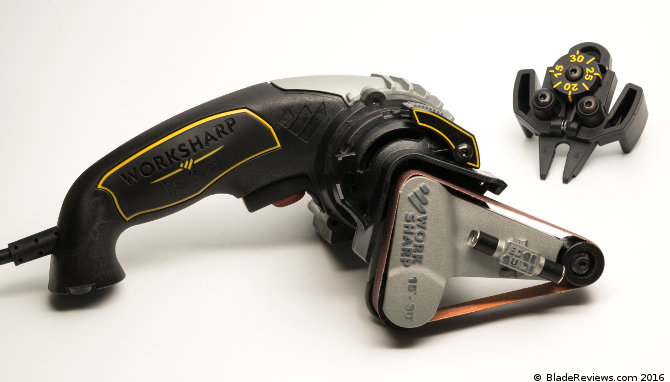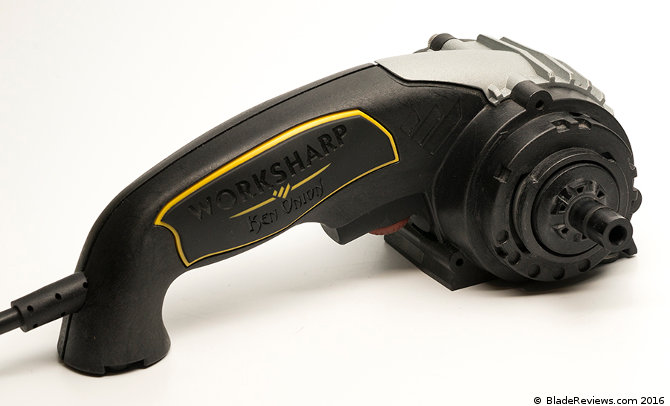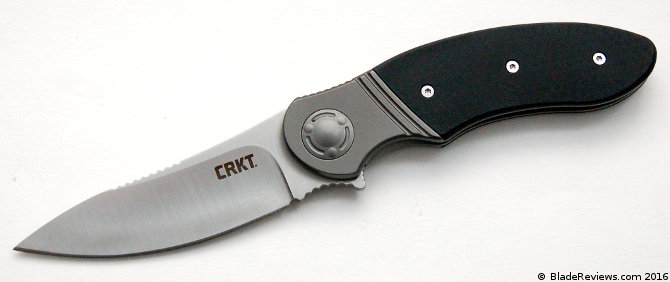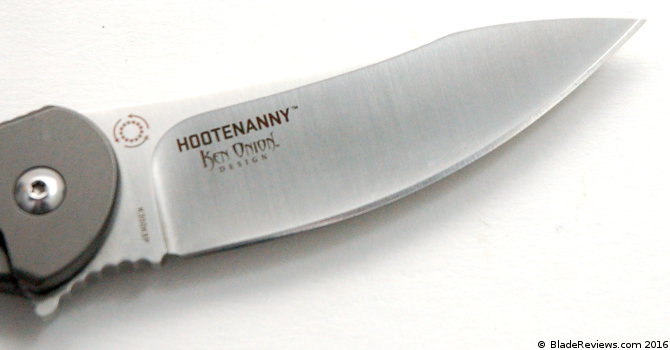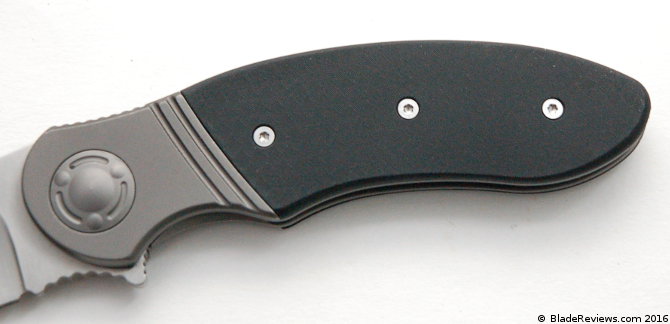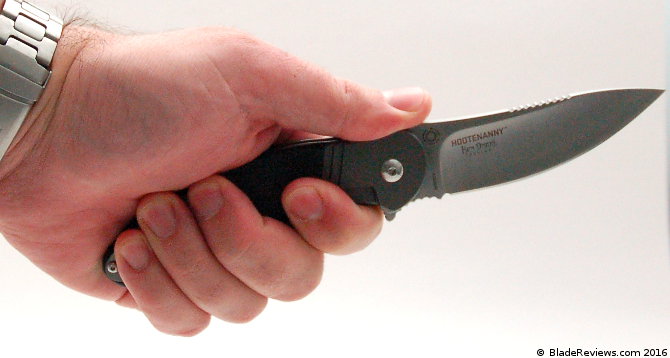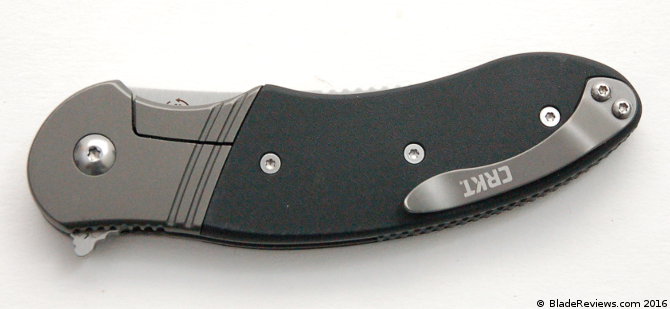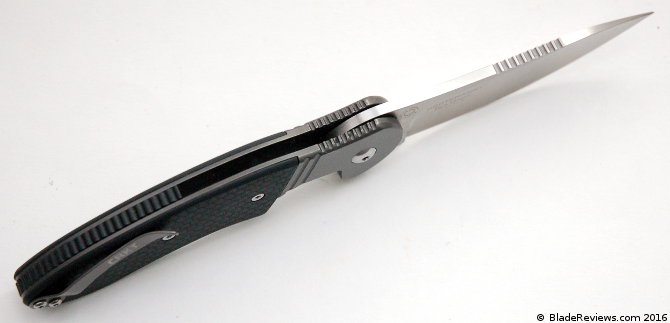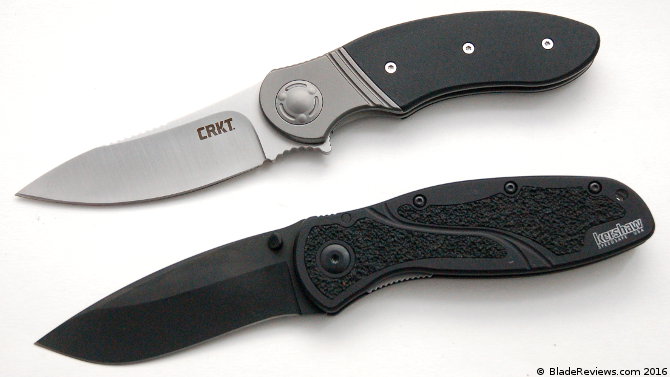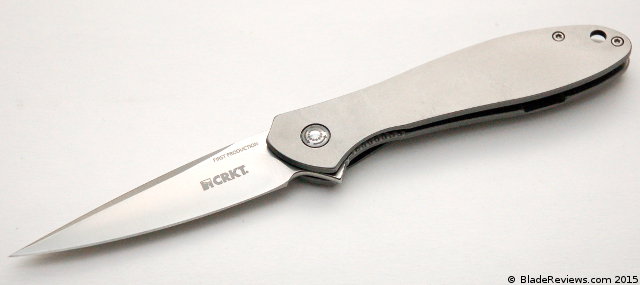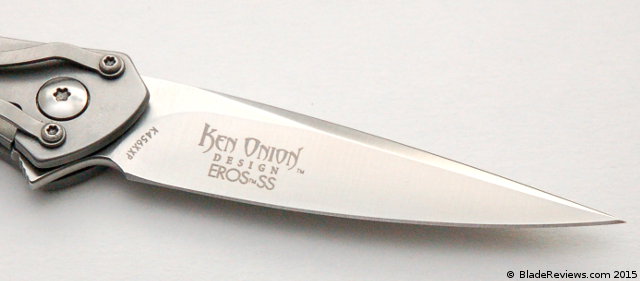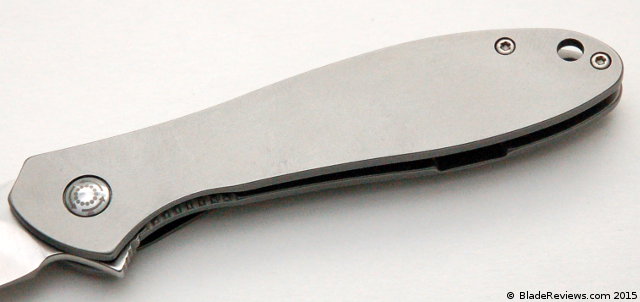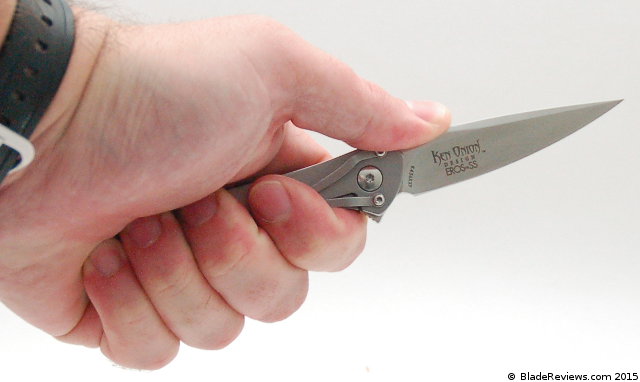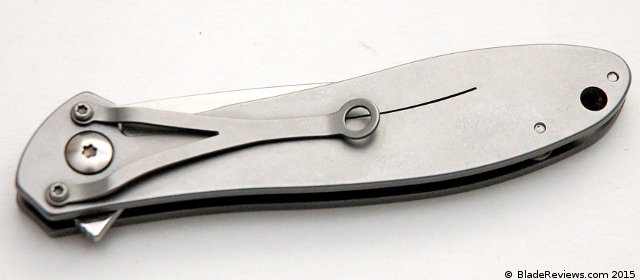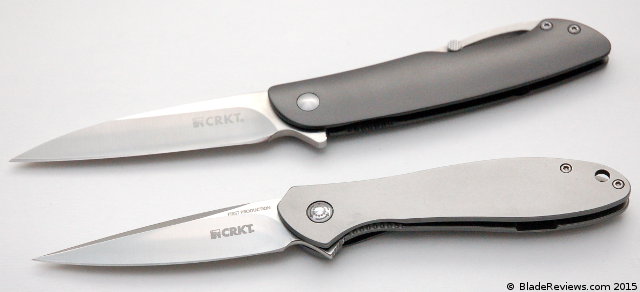It has been a good while since I have reviewed a CRKT knife. I wanted to remedy that situation, but struggled with selecting a knife. I like a lot of their designs, but sometimes weight gets in the way. For example, I like how they paired up with Eric Ochs to create the CRKT Avant, but at 5.4 ounces I couldn’t quite pull the trigger.
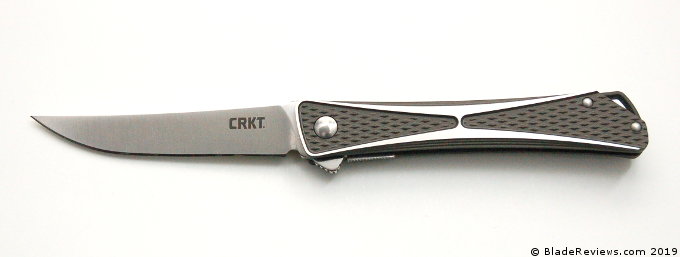
Buy the CRKT Crossbones at BladeHQ
The Crossbones caught my eye in part because it weighs less than 2.5 ounces, but also because CRKT has decided to double down on the design and release a high end version of the knife. To me, that signals the design has gotten some traction, and we may have something special on our hands.
The story behind this knife and it’s designer is also intriguing. This knife was designed by Jeff Park. Jeff has worked for Ken Onion for 10 years in Ken’s shop in Hawaii. The job quickly blossomed into a mentorship, and Jeff collaborated with Ken on the design that ultimately became the Crossbones. CRKT did a superb video overview of the knife that offers back story and a view into the design considerations.
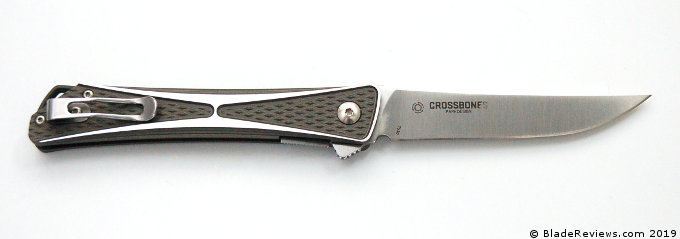
So after careful consideration I bought the Crossbones off Amazon and a few days later it was at my door. On that note, I bought this knife with my own money. This is the same for every other knife I review unless noted otherwise.
General Dimensions and Blade Details
The Crossbones has an overall length of 8.06″, a 3.54″ blade, weighs 2.4 ounces, and is made in Taiwan. This is a lightweight big-bladed EDC not unlike the Boker Urban Trapper. Where the Crossbones differs from the Urban trapper is that the Crossbones is much thicker. On the flip side the Crossbones will hold up to harder use much better than the Urban Trapper.
Speaking of the Urban Trapper, here is a quick size comparison:
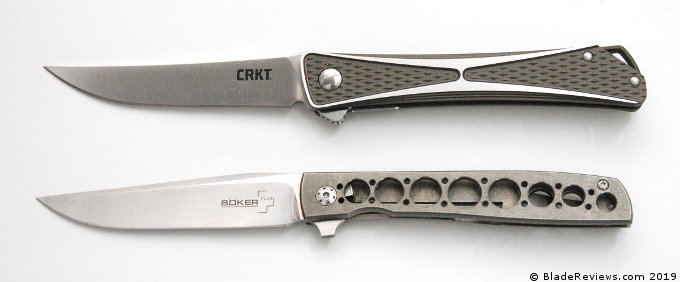
Another obvious comparison is with the CRKT Swindle. The swindle is about half an inch shorter and an ounce heavier. The Swindle is also half the price of the Crossbones. When you hold the two knives at the same time, you can see where the extra money went on the Crossbones. The machining, especially in the handle, is much more elaborate. Both knives fall into that “slim and slicey” EDC knife category, and the Crossbones in particular reminds me of a folding filet knife.
It’s worth mentioning that if you are looking for something much larger, CRKT also offers the Jumbones, which is a version of this pattern with a near 5″ blade. That is getting you even further into folding filet knife territory.
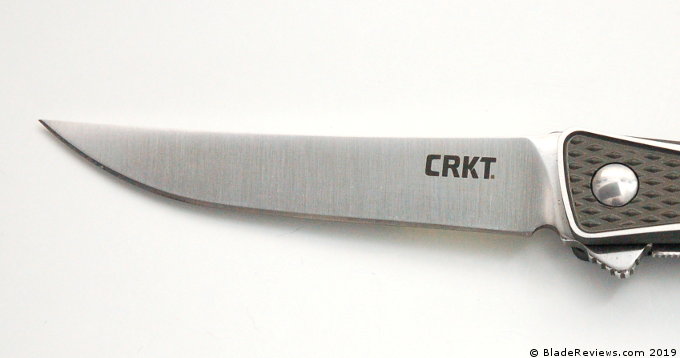
The Crossbones features a dramatic trailing point blade. Designer Jeff Park apparently took inspiration from the tanto blade shape, and he describes the blade as a “modified tanto”. Regardless what you have here is a long and thin blade. Blade stock is actually pretty robust at approximately 3.3 mm thick tapering down to a fine tip. The full flat grind gets pretty thin towards the edge and the satin finish is clean and easy to maintain.
CRKT selected AUS-8 for the blade steel. That is likely to get some grumbling, especially given the over $50 price tag. If you like the design and want to splurge, there is the premium version in M390, but it would be cool to see this in VG-10 or 154CM. I realize from a manufacturing logistics standpoint that could be expensive at best and impossible in some instances.
AUS-8 has a reputation of being a softer steel that is easy to sharpen but won’t hold an edge as a long as harder more expensive cutlery steels. On the plus side I’ve found AUS-8 to be a hearty steel that is tough, takes a nice finish, and is easy to maintain.
In practice the Crossbones performed as I would have expected. That slim blade is easy to get underneath the fold of an envelope, or into the seam of a box. The full flat grind aides in slicing, easily paring apples and breaking down boxes. The blade did slow down after some heavy cardboard cutting, but it was easy enough to bring back on my Spyderco Goldenstone. No issues with rust or corrosion.
Handle, Ergonomics, and Pocket Clip
The handle is kind of wild and crazy, and I suspect this is where CRKT allocated the majority of their budget. The 6061 aluminum handles have been heavily machined and given a dramatic 2 tone finish with bead blasted and satin finished elements. The profile of the handle resembles a dog bone, and that inspired the name. Inside you can see that the aluminum handles have been pocketed to accept stainless steel liners. Rounding things out are a partial backspacer that doubles as a lanyard hole, and custom hardware.
Fit and finish on the handle is excellent. The machining is meticulous. There is a fine diamond pattern milled into the handles. Not sure how they do that, but it probably takes some small endmills to get that level of detail. I am especially impressed by how well the steel liners fit into the aluminum handle.
The ergonomics on the Crossbones are interesting. On one hand this is a knife with a lot of sharp edges. That satin “X” shape in the handle looks cool, but the edges are sharp. Not to the point of cutting you sharp, but it’s certainly noticeable. But what I find interesting is that these sharp ridges offer a lot of traction while using the knife. Certainly this is not a piece that will easily slip out of your hand. I think for normal use the traction will be appreciated. Under more hard use conditions such as heavy rope cutting and carving wood, I think the traction is excessive and this knife is going to develop some hot spots.
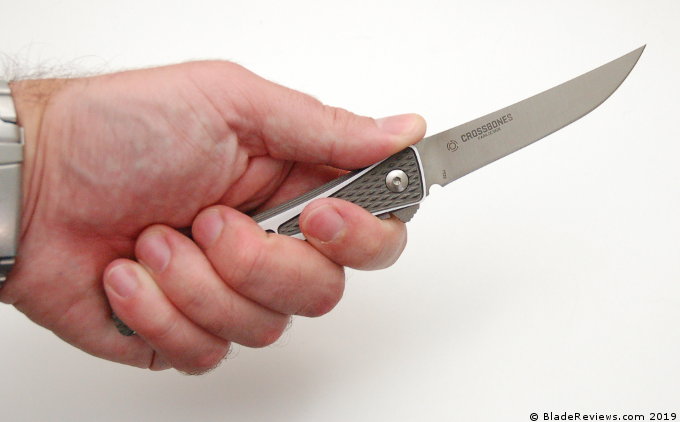
I’m left a little conflicted on the elaborate design work in the handle. Some people will like this, but I would have been OK with less detail and less sharp edges. I notice that Jeff’s knife in his CRKT overview lacked the crazy millwork. Part of me wonders how that knife feels in hand compared to this production version.
In contrast to the elaborate handle, the pocket clip is a small no-frills deep carry offering. The clip is positioned for right side tip up carry only, but it’s secure, offers good spring retention, and is discreet. The knife pretty much buries itself into your pocket. Great if you are looking for your pocket knife to fly under the radar. It’s also fairly easy to retrieve from the pocket.
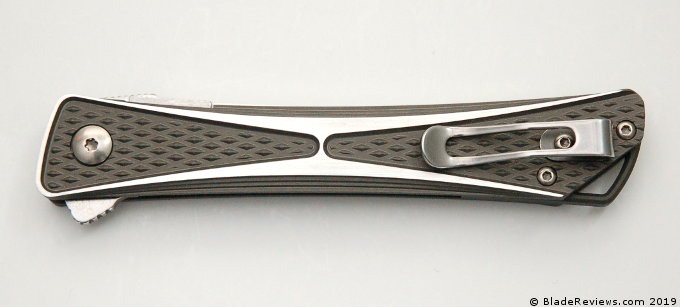
This Crossbones carries well. The heavily textured handle and stout pocket clip means that the knife is not going anywhere. At 2.4 ounces this is a knife you will quickly forget you are carrying until the time comes to use it. The knife is thick, but it’s not unreasonable. All said I think it behaves well in the pocket.
Deployment and Lockup
The blade of the Crossbones is accessed via a low profile flipper tab. The flipper tab is almost too low profile, thanks in part to a strong detent and rounded edges of the flipper tab. Rounded edges aren’t necessarily a bad thing. I noted in my SOG Terminus XR review that the sharp edges of the flipper tab on that knife actually cut my finger, so I’m glad that isn’t the case here.
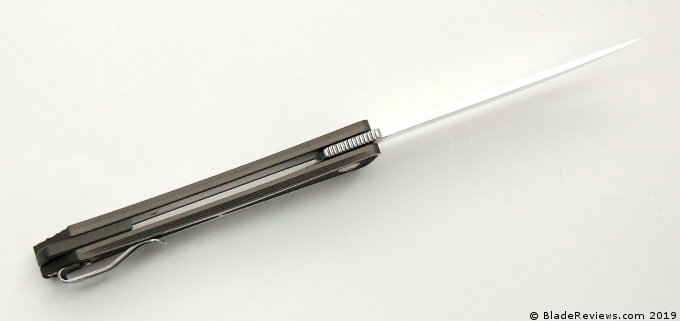
But on the flip side, my finger has slipped off this tab without opening the blade many times. It takes both technique and concentration. So that’s a bit of a bummer, but the good news is the detent is crisp and dialed in. When the knife opens, it opens with authoritay. The blade rockets out thanks to a strong detent and IKBS bearing system.
For lockup we have a stainless steel liner lock. The lockbark engages fully with the tang of the blade, and it sits in the middle of the tang. There is no lock rock, or blade play in this knife. Out of the box the lockup was just a little sticky, but that has smoothed out with use.
Here is a size comparison with my Swindle. I still have this knife 5 years later, and it’s still an impressive budget knife. Time flies.
Blade centering is close to perfect on my knife. Maybe off by a hair.
CRKT Crossbones Review – Final Thoughts
The Crossbones is an interesting knife. I am not sure if it rises to the level of being an “iconic folding knife” but it’s certainly different, and everything and has been well implemented. Retailing around $65, it’s on the expensive side for CRKT, but they have dialed in the fit and finish on this blade and a lot of work was put into the handle. Visually the knife is striking, with it’s unique profile and monochromatic look. The heavily machined handle will read as busy to some, but I appreciate that they tried to do something different here.
Functionally the knife has a lot going for it. It’s lightweight and easy to pocket. It’s a long bold looking knife, so maybe not appropriate for all social situations, but the long thin blade can get into places other knives can’t. The handle is heavily textured and easy to grasp. I found the flipper tab a little slippery at times, but nothing egregious. Of course I’d always like to see a better steel than AUS-8, but jumping up to a better steel would probably require a corresponding jump in price. If you really like the design then perhaps snagging one of the limited edition versions is worthwhile.
At the end of the day, I can see why CRKT has offered the Crossbones in a few different configurations. It’s a cool design, and it has been well executed. While I can’t give it a blanket endorsement, I think if you are interested in the design, then the Crossbones is worth picking up.
- Smooth Opening: IKBS ball bearing pivot deploys the blade smooth
- Fast Opening: The flipper deploys the blade fast
- Easy To Sharpen: High carbon stainless steel blade takes an edge well
- Classy Appearance: Satin finish blade has a modern look
- Custom Stylings: Two-tone aluminum handle has distinctive look
I recommend purchasing the CRKT Crossbones at Amazon or BladeHQ.
